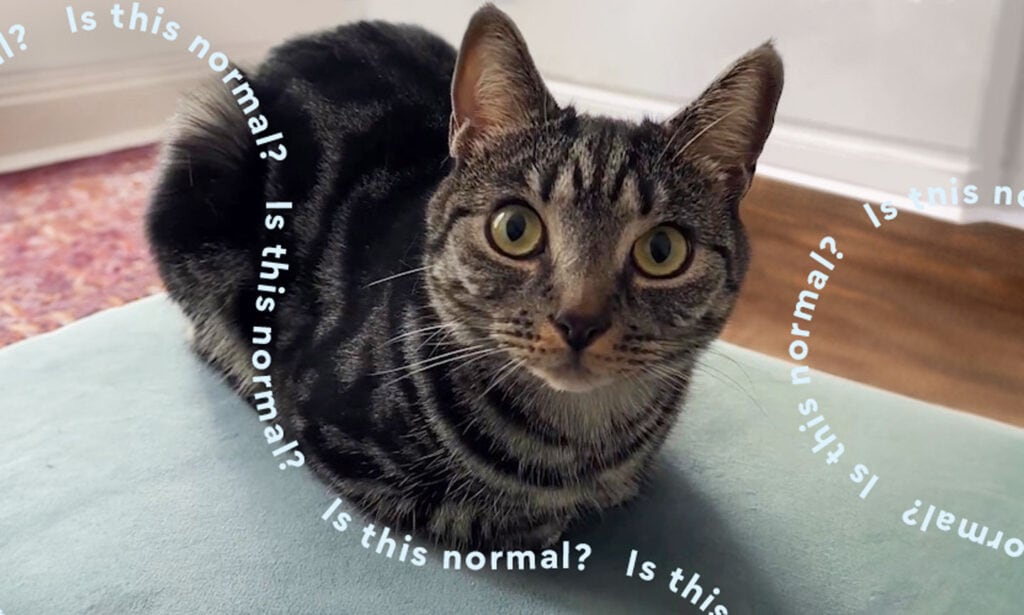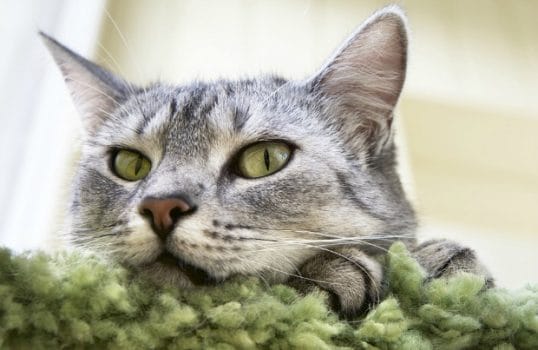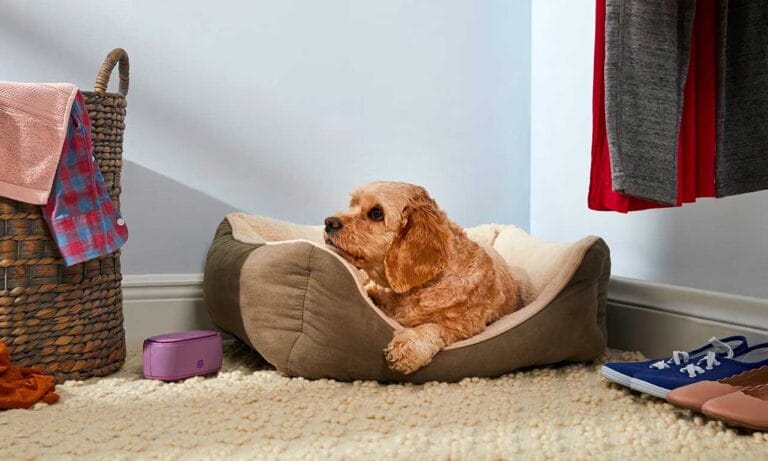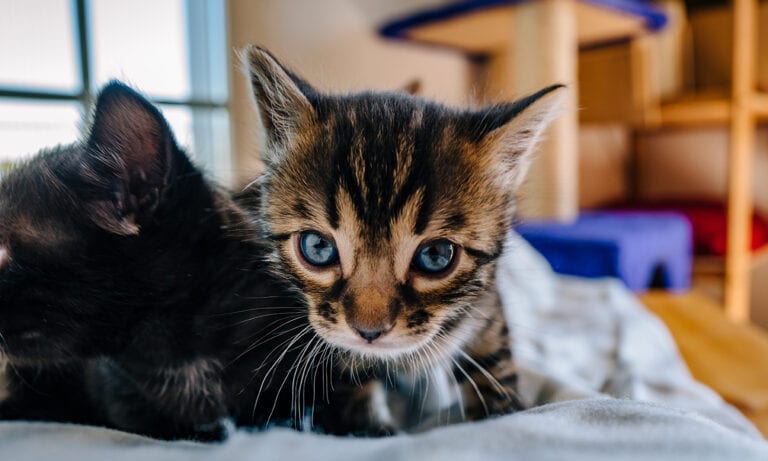Q:My cat will sometimes sit with her legs all tucked under herself. I heard this is called a “loaf.” Why do cats loaf? She is eating, sleeping and drinking fine and seems healthy otherwise. Is this normal?
A: Cats loaf for various reasons, including thermoregulation, protection and because they feel relaxed and content. Rest assured, cat loafing is usually normal cat behavior.
What Does a Cat Loaf Look Like?
A cat loaf pretty much looks like what it sounds like: a loaf of bread that's compact and rectangular in shape but with rounded edges.
"When cats loaf, they tuck their paws in and curl their tail around their bodies so you really only see the body and their head—a cat loaf!” says Stephen Quandt, CFTBS, founder of Stephen Quandt Feline Behavior Associates, LLC, based in New York City.
Different Types of Cat Loaf Positions
Cat loafs—er, loaves—come in many different amusing variations, according to Quandt. Perhaps you’ve seen your feline friend do one (or a few) of these bread loaf positions:
Full Loaf Position

iStock.com/Syd White
A full loaf is the ultimate cat loaf position.
During a full loaf, a cat lies on their stomach with their arms, legs and paws all tucked beneath themselves. Their tail is usually curled around their body, and their head is held upright.
If you’ve ever been lucky enough to view a cat loaf from under a glass table, you know exactly what this position looks like.
Partial Loaf Position

iStock.com/Svetlana Popova
A partial loaf varies slightly from the full loaf.
“In the partial loaf, the front paws are visible, often tucked just in front of their bodies with the claws often not fully visible,” explains Quandt.
Loaf Boat

iStock.com/AnthonyRosenberg
You may be familiar with "The Love Boat," but how about the "loaf boat"?
“In the loaf boat, one front paw is farther out than the other,” shares Quandt.
It’s not totally clear as to why the loaf boat is called, well, the "loaf boat," but we guess it may have something to do with the cat’s paw resembling the front of a ship.
Sphynx Loaf

iStock.com/niuniu
Yes, the term "sphynx loaf" takes its name from the iconic Egyptian statue with a lion’s body and the head of a woman.
"The sphynx loaf is named after the Egyptian Sphynx monument because both front paws are stretched out," explains Quandt.
Face Loaf

Adobe Stock/Tom
"The face loaf involves a face plant with the cat's head dropped forward onto the floor," shares Quandt.
He likes to refer to this cat position as the "tuckered loaf." Adorable.
Meat Loaf
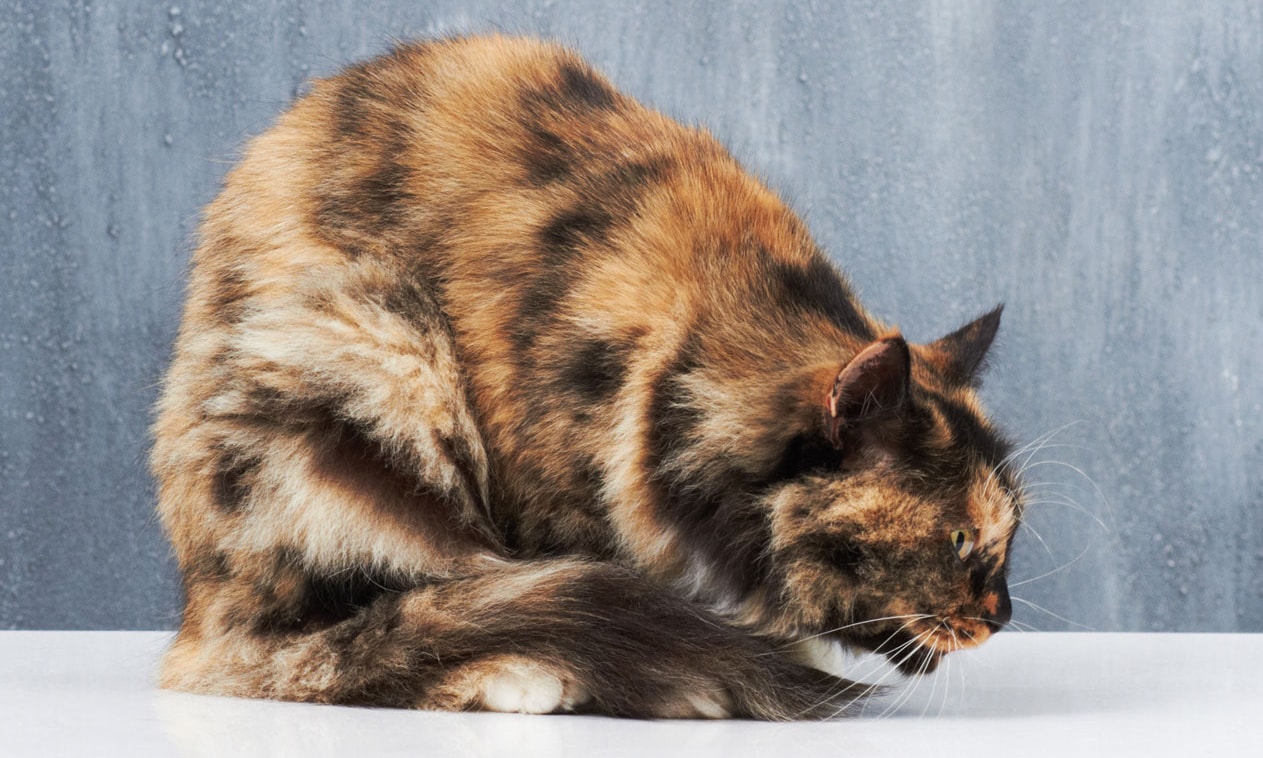
iStock.com/Urilux
As it turns out, meatloaf isn't just a tasty dinner dish; it's also a chuckle-inducing cat position.
"In the meatloaf position, the cat's back is arched," points out Quandt.
The cat's neck and front paws may also be in front of them or outstretched and they may rest their face or head gently on the floor.
Double Loaf

iStock.com/Iuliia Alekseeva
Like a double rainbow, a double loaf is quite rare. However, if you have two kitties at home, you may already be familiar with this one.
"In the rare double loaf, two cats are loafed next to each other," says Quandt.
Attack Loaf

iStock.com/OLENA SAKHATSKA
Yes, there’s even an attack loaf cat position. Quandt explains that during this one, a cat’s tail is often off the ground and extended back. A cat's front paws are also extended in preparation to pounce.
"Look for the classic wiggly butt just before the attack!" warns Quandt.
Why Do Cats Loaf?
There are many reasons why cats sit or sleep in this funny position. Here are some of them, as explained by experts.
They are relaxed.
Cat owners may notice that their furry friend seems laid back and calm when in this cute position. Quandt shares that this is because when a cat is loafing, they often feel relaxed.
"They're comfy and resting," he points out.
Video courtesy of Kluskacat
They feel safe.
Some cats choose a loaf as a sitting or sleeping position because they feel safe with you.
"Since they are not poised to move with their paws at the ready, it also may mean they feel secure and are trusting," says Quandt.
He mentions that if your cat is also purring or slowly blinking, these may be additional signs of happiness and contentment.
A cat loaf becomes even more relaxing for your furry friend when a comfy bed is added to the mix.
They feel threatened.
Dr. Sarah J. Wooten, DVM, CVJ, a veterinarian based in Silverthorne, Colorado, suspects that some cats may loaf as a form of protection when they feel threatened.
"Cats will protect their vital organs when they feel the need to," she explains, and the loafing position helps keep their soft underbelly from being exposed.
Not surprisingly, Dr. Wooten often sees cats loafing at veterinary hospitals when they are getting examined.
"I think it is also comforting to them," she says.
They're injured or sick.
Loafing may also mean your cat is sick or in pain.
"They may be trying to protect vital organs that are in distress, and they may generally be in pain or under stress," says Quandt.
For example, kidney disease has been linked to the version of the meatloaf position where the head is down on the ground and the front paws may be extended, he adds.
"But just the loaf itself doesn't mean the cat is ill," adds Quandt. You'll need to look for other signs of illness or pain, which may include the following:
- Lethargy
- Dilated pupils
- Ears tucked back
- Skin ripples
- Muscle tremors
- Low energy
- Loss of appetite
- Vomiting
- Diarrhea
- Panting or open-mouth breathing
- Hiding
- Trembling
- Shivering
If your cat is exhibiting any of these signs, contact your vet right away.
Decode more weird cat behavior:
Share:
